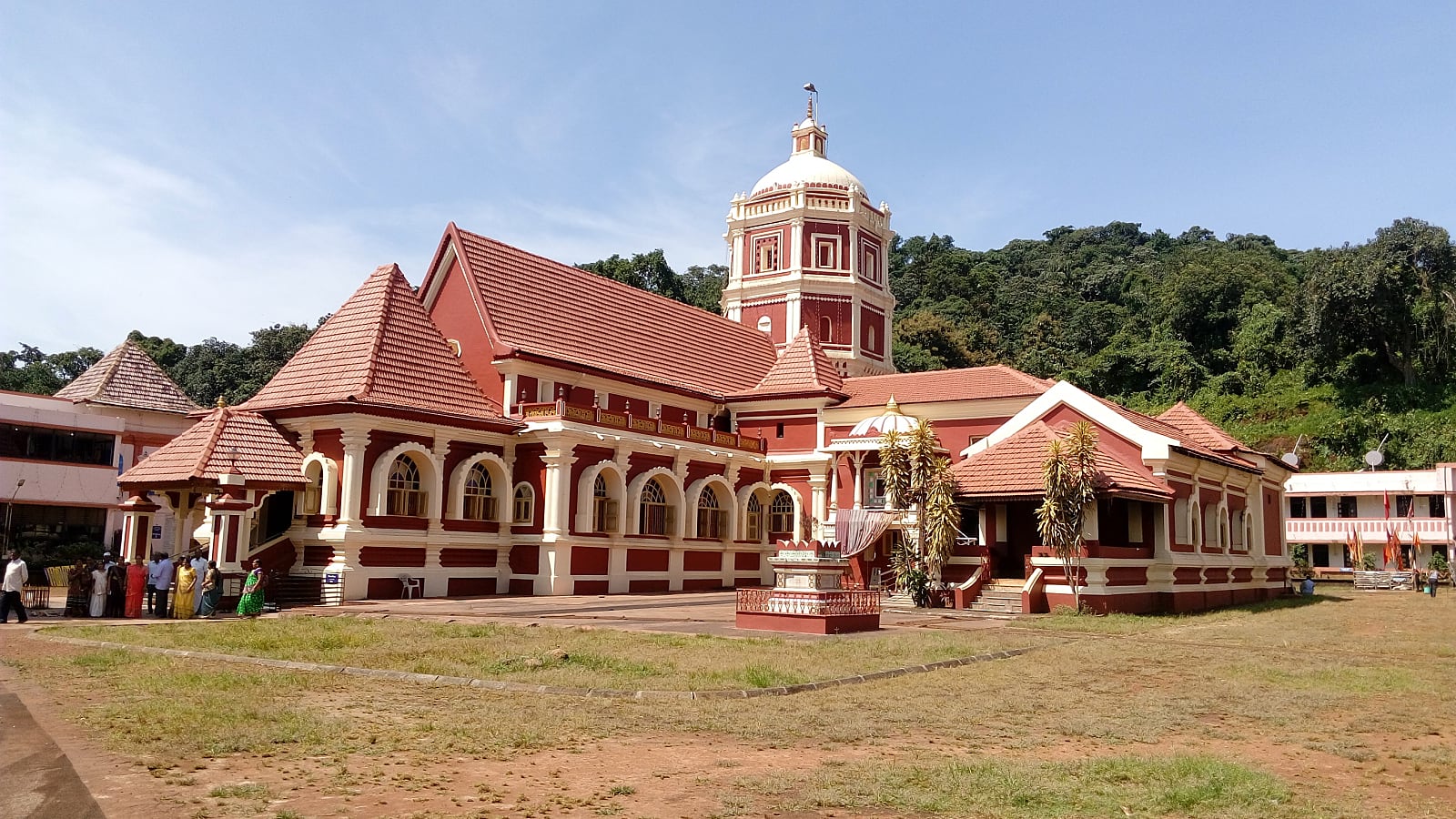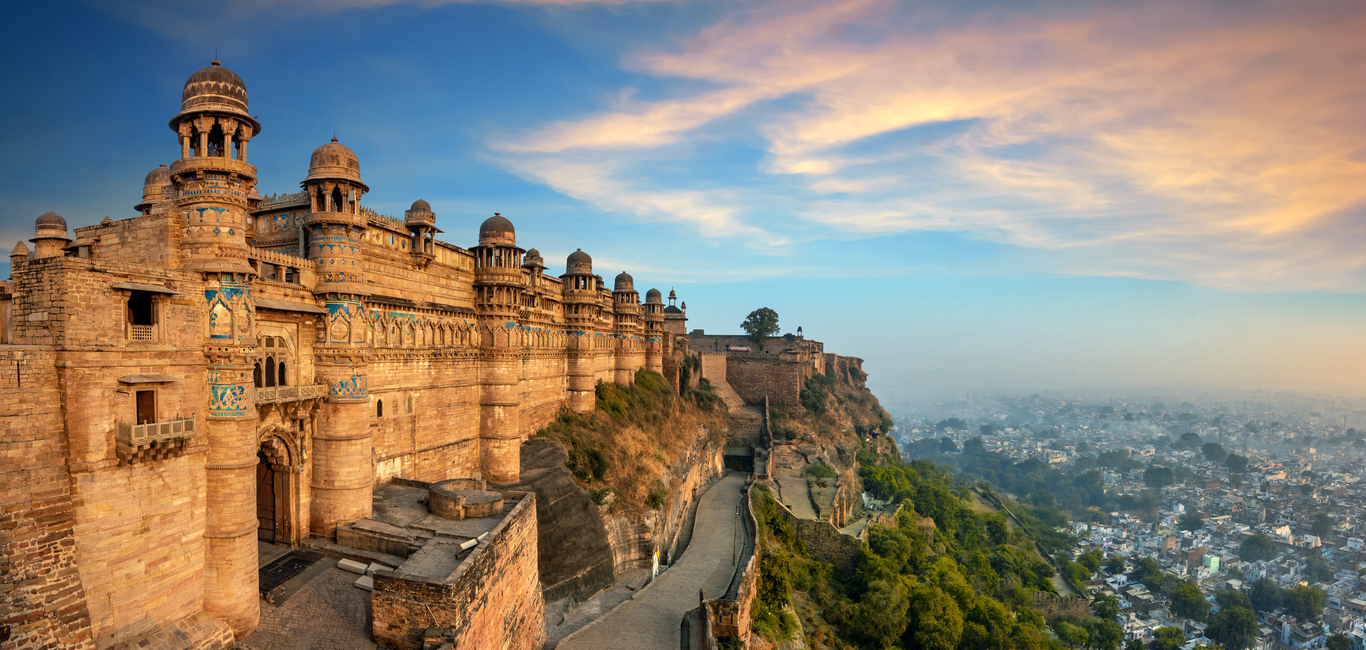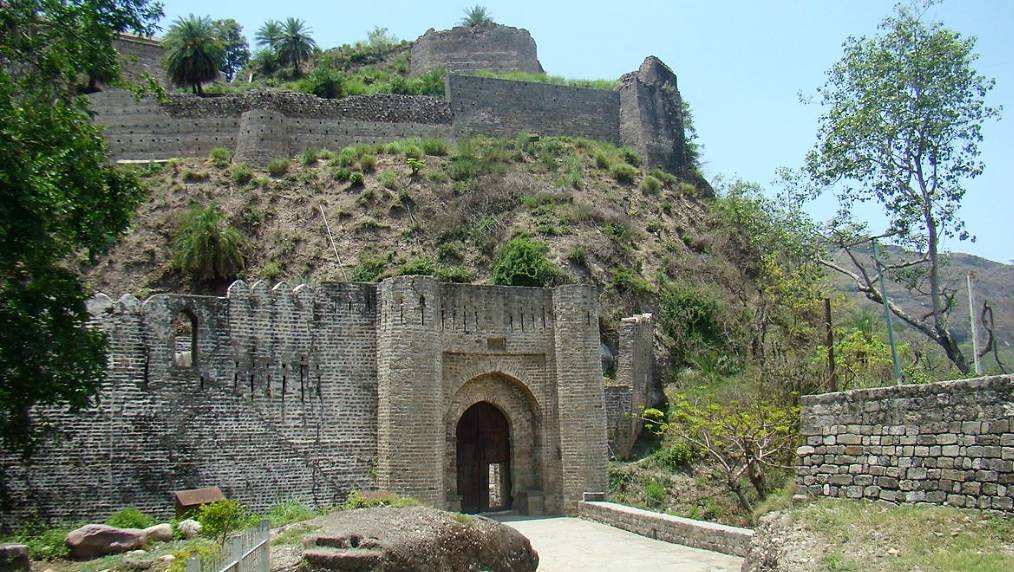This busy commercial town is experiencing an economic boom due to its proximity to some large iron-ore mines of the State. Around Ponda are a number of important Hindu shrines set amidst lush landscape full of swaying palms, numerous spice plantations and the wildlife sanctuaries of East Goa. Portuguese could not occupy Ponda for nearly two and a half centuries after they arrived in Goa. Thus, it became a haven for the Hindus, who escaped the Inquisition in the Old Conquests (Velhas Conquistas) and crossed the river to settle down here. It came under the Portuguese in 1791, by then they had become more tolerant towards other religions.
 Ponda Fort: It was originally built by Adil Shahi rulers and was destroyed by the Portuguese in 1549. Shivaji conquered the town in 1675 and rebuilt the fort and was again destroyed by the Portuguese. Within the fort ruins lies the mausoleum of saint Ghazi Abdullah Khan Shaheed.
Ponda Fort: It was originally built by Adil Shahi rulers and was destroyed by the Portuguese in 1549. Shivaji conquered the town in 1675 and rebuilt the fort and was again destroyed by the Portuguese. Within the fort ruins lies the mausoleum of saint Ghazi Abdullah Khan Shaheed.
Safa Masjid: Safa or the Shahouri was built in 1560, by Ibrahim Adil Shah of Bijapur and is the best-preserved Muslim monument of Goa.
Around Ponda
Shri Shantadurga Temple, Kavlem (3 kms.)
This largest and most popular temple of Goa was built in 1713 and dedicated to Shantadurga, a manifestation of Parvati or Durga. According to mythological legends, once Lord Vishnu and Shiva were engaged in a fierce battle. At the insistence of Lord Brahma, the Goddess Jagadamba appeared and calmed the fiery combatants. Thus, the Goddess came to be known as Shantadurga or a peace-maker. The beautiful pagoda-like temple is peculiar to Goa, as it is Neo-Classical in design with the distinct influence of European architecture. In front of the entrance is the six storeyed deepmal or Lamp Tower. Marble has been used extensively in the interiors of the temple fine chandeliers add to the beauty of the shrine. A pair of dwarpals (guardian deities) embossed on the silver screen flank the Garbhakuda or the holy of holies, where an impressive idol of Shantadurga stands between the images of Vishnu and Shiva.
Shri Mahalaxmi Temple, Bandode (4 kms.)
It is considered to be the abode of the original Goddess of the Shakti cult. The stone plaques found in the temple indicate that the shrine has been in existence since 1413. The temple was rebuilt in 1913, but the old outline and the architectural style was retained. The unique image of Mahalakshmi has a representation of linga on her head and it is considered a peaceful or Satvik form of the Goddess.
Lakshmi Narasimha Temple, Vellinga (5 kms.)
It is one of the most picturesque temples located around Ponda. The idol of the presiding deity, Lakshmi-Narasimha devta was brought here from Salcete in 1567.
Shri Mahalsa Temple, Mardol (7 kms.)
It lies just I kms. south of Mangueshi temple along the Panaji – Ponda road and is dedicated to Mohini, a female attribute of Lord Vishnu. The beautiful temple was constructed in 1567 and a seven storeyed deepmal or lamp tower in the courtyard and a 12.5 meters high data stamba or oil lamp, made of five metal (panchalayi). This dip stambha is considered to be the largest of its kind in the world and symbolizes the mythological churning of the sea.
Shri Manguesh Mandir (7.5 kms.)
The temple dedicated to Shri Manguesh, a manifestation of Lord Shiva, is one of the most important Hindu shrines in Goa. The present shrine situated on the side of a hill was built in 1565 and enlarged in the mid – 18th century. Its architecture reflects a typical Goan style, with Christian and Muslim influences. The courtyard has a 7-storeyed deepdaanor Lamp Tower, which is undoubted, the most impressive in Goa. The majestic white tower at the entrance is a special feature of Hindu temples in Goa. The interior is illuminated with graceful chandeliers, which is quite unlike Hindu temples and gives a church-like appearance. The Manguesh linga is placed in the main silver sanctum, flanked by a solid gold idol and is illuminated by oil lamps. There are also Shrines dedicated to Lakshmi Narayan, Satiri and Mulkeshwar behind the main temple.
Keri (8 kms.)
This typical Goan village is endowed with exceptional scenic beauty and has a rich heritage in Ayurveda, Indian classical music as well as cottage industries. The Vaidya family has been practicing the Ayurveda for generations. The Parvati Madhav Plants Park, AryaCashew Products Factory, Laterite Stone Mines and Sri Vijayadurga Temple are worth visiting sites.
Bondla Sanctuary (20 kms.)
This small sanctuary covers an area of 8 sq. kms in the lush foothills of Western Ghats. It is a major attraction for nature lovers as well as children. There is also a Mini Zoo, Deer Safari Park, Gardens, Botanical Gardens, and Eco-Tourism Cottages.
Bhagwan Mahaveer Wildlife Sanctuary, Molem (28 kms.)
The sanctuary set in the foothills of picturesque Western Ghats is spread across 240 sq. km. of semi-evergreen and moist deciduous forest dotted with clearings of grasslands and occasional tribal village. Key fauna-gaur, sambar, spotted deer, slender loris, jungle cat, Jcopard and monkey. Molem lies on the N H 4A, about 53 kms. from Panaji and 54 km. from Margao. Colem(6km.) is the nearest railhead.
The famous Tambdisurla temple is just 13 kms. from here. The Mangalore – Margao journey on Konkan Railway provides an excellent view of the silvery Dudhsagar falls.
Dudhsagar Waterfalls: The fabulous fall to the south-east of Molem lie within the Bhagwan Mahavir Sanctuary and are the second-highest falls in the country. A tributary of the Mandovi river plunges majestically from a height of 603 m and creates a foaming torrent that splits into three streams, which cascades down a near-vertical cliff face into a deep green pool full of lush foliage. The best time to visit the falls is just after the monsoons, from Oct. to mid- Dec.
The Devil’s Canyon at the base of the falls is a very charming spot with a deep pool formed between the steep-sided rocks. It is also an excellent site to view wildlife.
The best way to visit the falls is by the train from Vasco to Londa. It stops at Dudhsagar station, from where you can walk back down the line through a small path which leads to the falls. The train stops at the Collem railhead, to pick up passengers for the trip to the waterfalls. The railway line from Vasco to Londa crosses the mountainside and one can enjoy a great view of the falls from the window of the train.




